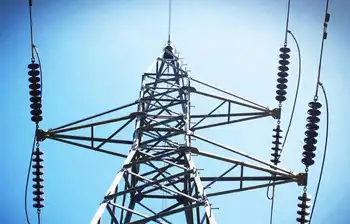British Energy Group Wants Renewables Tax
LONDON, England -- - Roberts, chief executive officer of energy group United Utilities, has called for a "renewables tax" to help to meet the UKpound 2 billion (E2.9 billion, $3.1 billion) estimated cost of plugging renewable electricity generators into the national grid.
The plans, submitted to UK energy regulator Ofgem, could raise British prices by 30% in two years. Last month's energy White Paper reaffirmed the government's aim to generate 10% of electricity from renewable sources such as wind by 2010, rising to 20% by 2020. With much of this capacity being built offshore and in remote parts of the country, such as the Scottish Highlands, huge investment is needed to extend and upgrade local distribution networks feeding the grid. Speaking to the House of Commons science and technology select committee last week, energy minister Brian Wilson conceded: "A lot of these things are dependent on how the transmission systems work. We will have to review them to allow us to meet these targets." Electricity distribution costs account for about UKpound 2 billion per year and 25% to 30% of customers' electricity bills, which for domestic customers alone, totalled UKpound 8.5 billion in 2001. Ofgem is consulting on the 2005-2010 price review, which will set transmission prices that distribution network operators, such as United Utilities, can charge. Under United's plans, Ofgem would set each of the eight network operators in the UK a target for connecting renewable generators. They would be given a "renewable allowance", which could total UKpound 90 million for 2005-06, or a half penny per unit of electricity, which on the spot market is currently traded for about about 1.5 pence. This allowance, to be raised from customers, could rise to UKpound 200 million by 2020.
Last month's energy White Paper reaffirmed the government's aim to generate 10% of electricity from renewable sources such as wind by 2010, rising to 20% by 2020. With much of this capacity being built offshore and in remote parts of the country, such as the Scottish Highlands, huge investment is needed to extend and upgrade local distribution networks feeding the grid.
Speaking to the House of Commons science and technology select committee last week, energy minister Brian Wilson conceded: "A lot of these things are dependent on how the transmission systems work. We will have to review them to allow us to meet these targets."
Electricity distribution costs account for about UKpound 2 billion per year and 25% to 30% of customers' electricity bills, which for domestic customers alone, totalled UKpound 8.5 billion in 2001.
Ofgem is consulting on the 2005-2010 price review, which will set transmission prices that distribution network operators, such as United Utilities, can charge.
Under United's plans, Ofgem would set each of the eight network operators in the UK a target for connecting renewable generators.
They would be given a "renewable allowance", which could total UKpound 90 million for 2005-06, or a half penny per unit of electricity, which on the spot market is currently traded for about about 1.5 pence. This allowance, to be raised from customers, could rise to UKpound 200 million by 2020.
Related News

Disrupting Electricity? This Startup Is Digitizing Our Very Analog Electrical System
NEW YORK - Electricity is a paradox. On the one hand, it powers our most modern clean cars and miracles of computing like your phone and laptop. On the other hand, it’s one of the least updated and most ready-for-disruption parts of our homes, offices, and factories.
A startup in Silicon Valley plans to change all that, and has just signed deals with leading global electronics manufacturers to make it happen.
“The end point of the electrification infrastructure of every building out there right now is based on old technology,” Thar Casey, CEO of Amber Solutions, told me recently on…




